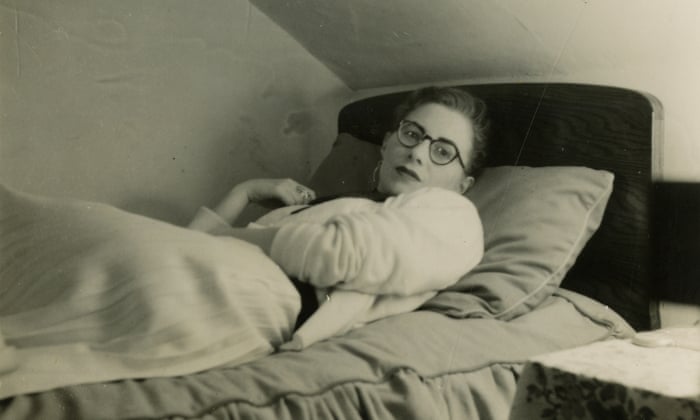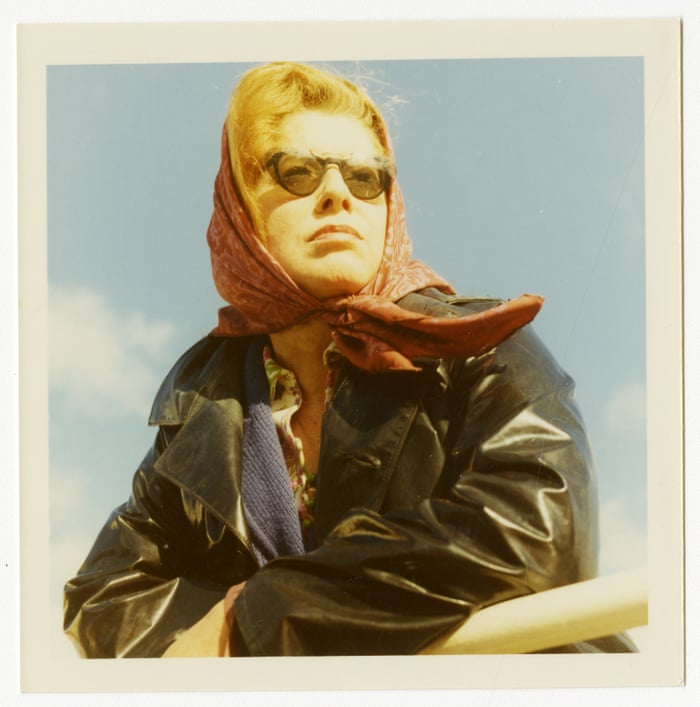 |
| Monica Jones in a photograph taken by Philip Larkin. Photograph: The estate of Philip Larkin |
Sex, lies and despair: unseen letters reveal Larkin's tortured love
A cache of 2,400 letters between the poet and his long-time lover and muse, Monica Jones, charts an explosive and flawed romance
Dalya Alberge
Sunday 24 May 2020
“He lied to me, the bugger, but I loved him.” So Monica Jones described the revered poet Philip Larkin – a pithy but affectionate account of a lover who was serially unfaithful, but whose “utterly undistinguished little house” in Hull she turned into a shrine after his death.
Previously unpublished letters, however, reveal the full extent of her fury, fears and frustrations over a painful four-decade-long partnership with the man who wrote some of the most cherished verse in the English language.
“I don’t want to be and I won’t be an object of pity like a beggar’s sore,” she wrote to him in one letter. “I know you just think of me as a SITUATION, something to be fixed,” she lamented in another. She wrote repeatedly of feeling terribly alone and “so frightened”. Such was her despair that she referred to a bruised shoulder as “a kind of company”.
Her heart-wrenching thoughts are contained in 54 boxes filled with 2,400 letters to Larkin that she left to the Bodleian Library, Oxford, with the strict instruction that they were to remain closed until decades after her death. She died in 2001, aged 78.
Now Professor John Sutherland, a leading scholar and Jones’s close friend, has been given unrestricted access to the extraordinary collection.
He told the Observer that the letters were “explosive in their nature”, and represented “virtually everything that she wrote to Larkin over 37 years of separated love”.
 |
| Philip Larkin and Monica Jones at the memorial service for Poet Laureate Sir John Betjeman at Westminster Abbey, London, in 1984. |
Describing it as “the last great exchange of letters in literary history”, he said it was “like she’s ripping open her soul and her mind, letting it pour out. There’s a whole range of emotions. Sometimes she is furious when he doesn’t turn up for a meal she’s cooked. Other times, she’s just meditative.” She wrote of her emptiness: “Every smallest thing is too much for me.”
Larkin and Jones were both born in 1922 and studied at Oxford, although they first met at the then University College Leicester in 1946. He was a newly appointed deputy librarian and she was an English lecturer, a striking woman with peroxide hair. Larkin transferred to Queen’s University Belfast in 1950 and then five years later to the University of Hull. Jones lived for his visits. Their once-passionate relationship, blighted by their heavy drinking, lasted until his death in 1985.
Sutherland said: “Larkin had two women in Hull [one of whom was Maeve Brennan]. He would fit Monica in when he was visiting his mother up the road [in Loughborough] … Then he’d be back to Hull and the other women.”
Jones knew of those women, yet she repeatedly declared her love for Larkin in her letters: “I am so blessed to have you in my life.”
Sutherland said: “Her letters resemble a literary stream of consciousness – at times, more surging flood than stream. They have odd disjunctions. After a pages-long savage diatribe against Maeve, Monica suddenly reminds Philip to water the flowers.”
Larkin appreciated Jones as his intellectual equal, unlike his other women. He dedicated his breakthrough collection, The Less Deceived, to her – though it includes poems about his other partnerships. He bequeathed the bulk of his estate to her.
But the fact that he wrote so little poetry has been blamed on the stultifying effect of Jones, Sutherland said: “His poetry depends on four slim volumes … Around 100 poems.”
 |
| Monica Jones photographed by Larkin on the Isle of Mull, Scotland, 1971. Photograph: The estate of Philip Larkin |
He noted that Kingsley Amis, Larkin’s closest friend from Oxford, was particularly vicious, dismissing her as a “grim old bag”.
“Margaret Peel in [Amis’s novel] Lucky Jim is a terrible caricature of Monica. Kingsley hadn’t met her at that point. Philip gave Kingsley all the details. He could be cruel in that way. She wrote an incredibly impassioned letter to Philip saying, ‘I am not so egotistical as to think everybody wants to put me in a book and I do not believe you would be so treacherous’.”
Jones has also been vilified for destroying 30 volumes of his diaries and private papers.
Sutherland, professor emeritus of modern English literature at University College London, was taught by Jones, and he attributes his career to her. He is now finishing a book on Jones, based on the letters, to be published next year by Weidenfeld & Nicolson. He expressed surprise that no one had written a biography of her before as she was the most important person in Larkin’s life.
He said no other biographer of Larkin had “enjoyed access to these letters”, which the Bodleian has catalogued in a “feat of librarianship at the highest level”. Poignantly, some of the envelopes still bear her lipstick marks.
The correspondence ends in the early 1970s when they got telephones. Sutherland said: “After that, he would telephone every night. When her health collapsed in the early 1980s, she moved in with him. They got drunk together. He died and she lived on drunkenly.
“She was a strange woman. You had to know her, to know the good things about her. He treated her badly, but always wrote fondly. It was an odd mixture … He did come near to trying to break up with her, but they needed each other. They were both very unhappy people.”
Sutherland hopes “to salvage Monica Jones from the versions of Monica Jones which circulated in her life and still circulate”. “From the unplumbed depths of the 54 boxes, one can exhume a Monica Jones to stand alongside Philip Larkin, not behind him as his dim correspondent shadow.”


No comments:
Post a Comment